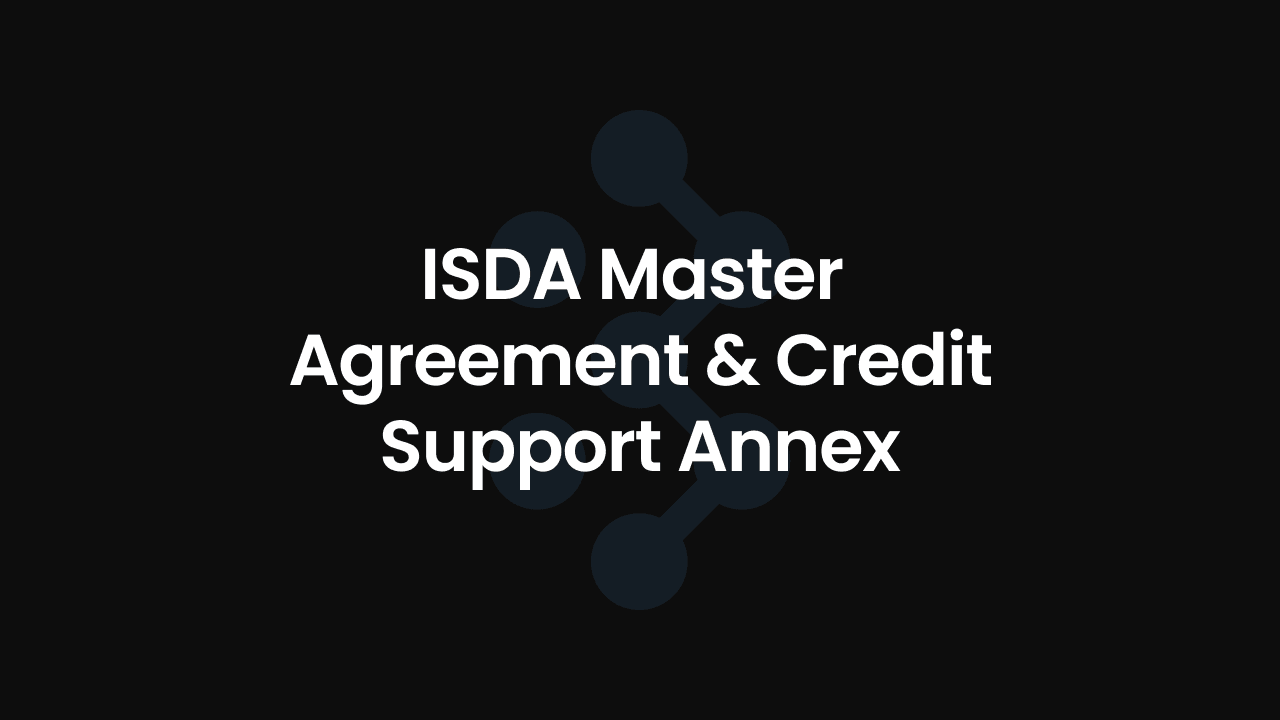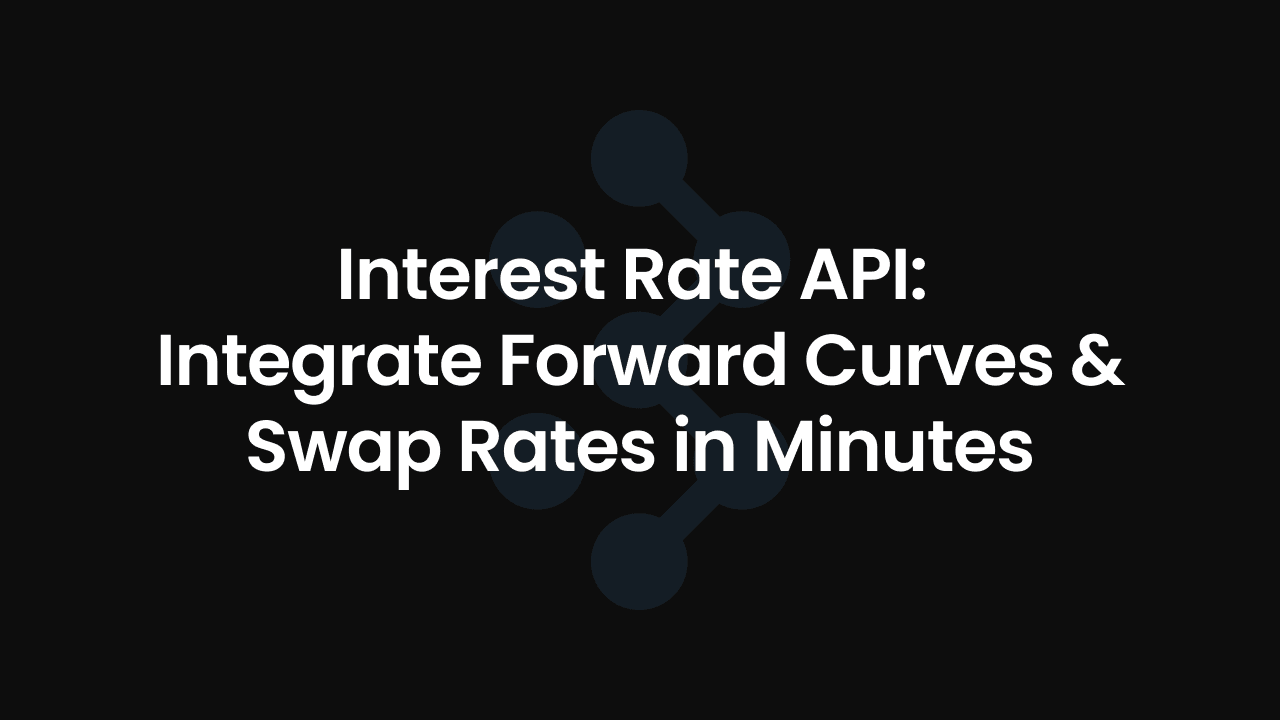Interest Rate Hedging & Renewable Energy

Interest Rate Hedging & Renewable Energy
Wondering why interest rate hedging is important for renewable energy projects? Well, you have come to the right place!

The need for interest rate hedging generally comes from the typical financing structure seen in renewable energy projects, Project Financing. In such a structure, a lender provides funding which is secured against project rights and in exchange for the risk they take, they asks for a floating interest rate and a margin. The floating interest rate, leads to interest rate risk which project sponsors can mitigate using interest rate hedging.
While interest rates are typically hedged due to a requirement from the lending bank, it may also be down to a project sponsors preferences and risk tolerance.
Understanding and effectively managing this interest rate risk is therefore a critical component for the success of renewable energy projects. In the following sections, we will consider
- What is project finance, and why it is used
- Interest rate hedging structures typically seen
Investments in renewable energy are capital intensive and mark low on the risk scale: a perfect combination for long term project financing.

What is Project Finance?
Project Finance, particularly in the renewable energy sector, is a specialised financing approach where funds are allocated based on the distinct risks and potential cash flows of a specific energy or infrastructure project.
Unlike traditional financing methods, Project Finance is characterized by its non-recourse nature, meaning lenders rely primarily on the project's revenue-generating ability rather than the creditworthiness of the project sponsors.This method is particularly suited to renewable energy projects due to their capital-intensive nature and the relatively stable, predictable cash flows they generate over time.
In renewable energy Project Finance, the leverage is often higher compared to corporate borrowing, typically ranging from 70–90%. This high leverage makes the projects more sensitive to changes in interest rates, underlining the importance of effective interest rate hedging strategies.Given this sensitivity to interest rates, project finance lenders will make it a requirement to hedge the interest rate risk, to try and reduce the risk of adverse impact to project economics from interest rate fluctuations.
Why is project finance used?
So you're probably thinking, sounds complicated. Why don't I just use equity?
For developers of renewable energy projects, project finance is a attractive due to its unique risk allocation and return structure. It enables developers to undertake large-scale, capital-intensive projects like wind farms or solar projects without the need for the whole capital requirements at financial close. This is done by securing the financing against the project's future cash flows, rather than their own corporate assets.
This approach minimises the developer's balance sheet risk and leverages the project's inherent potential. Additionally, project finance often involves multiple stakeholders, spreading the financial risk and making large ventures more feasible. For renewable energy projects, which typically have predictable, long-term revenue streams, this financing model is particularly well-suited and that's why despite the quirks, it is very common to see project financing in renewable energy projects.
Example: Financing SkyStream Wind 1
Imagine a renewable energy company, SkyStream Wind 1, is planning to build a 300MW wind farm. The total cost of the project is estimated at EUR 800 million. To finance this project, SkyStream Wind 1, decides to use Project Finance, taking out a loan for EUR 600 million, which is 75% of the total project cost (indicating high leverage typical in renewable energy projects). This loan is structured with a fixed margin + a floating interest rate linked to the 6 month EURIBOR (Euro Interbank Offered Rate).
Scenario Without Interest Rate Hedging:
- Year 1: EURIBOR is at 2%, making the annual interest payment EUR 12 million (EUR 600 million * 2%)
- Year 2: EURIBOR unexpectedly rises to 5%, increasing the annual interest payment to EUR 30 million
- This sudden increase in interest rates significantly raises the cost of the loan, putting financial strain on SkyStream Wind 1. It could lead to budget overruns, reduced profitability, or in a worst-case scenario, an inability to service the debt
Scenario With Interest Rate Hedging Using an Interest Rate Swap:
- SkyStream Wind 1 enters into an interest rate swap agreement with a bank at the start of the loan term
- The swap "fixes" the interest rate at 3% for the duration of the loan
- Regardless of fluctuations in EURIBOR, SkyStream Wind 1's annual interest payment remains consistent at EUR 18 million
- This stability in financial outflows enables better budget management, ensures project viability, and protects against rising interest costs
How does interest rate hedging mitigate interest rate risk in Project Finance?
First let's look at why interest rates are floating interest rates an issue for project finance lenders.
- Long-term Loan Duration: Project finance involves decades-long loans where interest rates can significantly fluctuate over time, increasing risk exposure for lenders
- Limited Recourse for Lenders: Lenders depend on the project's success for repayment, as their recourse is often limited to the project’s assets and cash flows. Rising interest rates can increase default risks if project cash flow become insufficient to cover debt service
- Cash Flow Stability and Viability: Predictable cash flows in operational projects (like utilities) are essential for debt servicing. Interest rate volatility can disrupt this stability, impacting project viability and lender returns
- Influence of Economic and Regulatory Factors : Lenders must consider external factors like inflation, monetary policy, and economic cycles that can cause interest rate volatility, affecting risk assessments and funding costs
Due to these factors, project finance lenders will typically make interest rate hedging a requirement for the project to borrow debt. And as project finance is typically provided on a floating rate basis, interest rate hedging becomes a requirement to borrowing debt.
What are my options when it comes to interest rate hedging in project finance?
There are a few instruments typically seen to hedge interest rates in project finance, which are:
- Interest Rate Swaps: This is a popular hedging instrument where two parties exchange interest rate payments – one pays a fixed rate and the other pays a floating rate. This allows the project to convert a floating rate loan into a fixed rate loan, stabilizing interest expenses
- Interest Rate Caps: These are agreements that set a maximum (cap) on the interest rate. If the market rate exceeds this cap, the issuer compensates the borrower for the difference. Caps are useful for projects that can tolerate some interest rate variability but want to limit exposure to extreme spikes
- Interest Rate Collars: Combining caps and floors, collars set both upper and lower limits on the interest rate. This allows a project to benefit from some degree of rate fluctuation while limiting exposure to extreme rate movements
What's the most common product seen to hedge interest rates in project finance?
Interest rate caps can require a significant premium to be paid up-front, with the premium increasing almost exponentially with increasing tenors. As such, these are the least common of the three in project finance.
Interest rate swaps are most common with collars becoming attractive in interest rate environments where rates are volatile, i.e. South Africa. To learn more about Interest Rate Swaps, read our beginners guide on Swaps here.



.png)